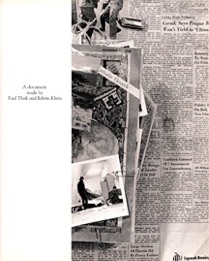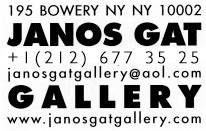At the installation stage of his career, and until the end of his life, the American artist Paul Thek (1933-1988), questioned the validity of the idea of solo authorship: its negation was at the heart of his oeuvre. He was thinking, in the context of the time, of a group political ethos. Creativity, for him, was an essentially collaborative event somewhat relating to the pyramid and cathedral builders. He saw each one of his installations as the spontaneous result of a group with shared sensibilities, thinking as one mind. Beate Svedhoff, a Swedish reviewer, called Paul Thek's work the new Walden: "Thek and his friends have built up a nature which they look after like temple servants: a nature which has the signs of togetherness-but which cannot keep out death. The transcendental, pantheistic feeling is also present. Everything is included-even what we are running away from. And there is an attempt to forget that the end is near. To understand is impossible. To know is possible-to feel is possible: to intuit. This probably explains why, in 1966, Susan Sontag dedicated Against Interpretation to Paul Thek."
Important collaborative works, Document 2 and 3 were created in Amsterdam in 1973 by Paul Thek and the Dutch photographer and designer Edwin Klein (1946-). In various museums in Europe, Thek and his group, which included Klein, built large-scale papier-mâchè pyramids—ritual architectural spaces—out of the daily newspapers, with a chronology of dates painted on them. Photographs of the work in progress were glued to these structures throughout the installation, marking the actual passage of time.
Done in the same manner, Document 1 (jointly published by the Stedelijk Museum and the Moderna Museet in 1969), and Document 2 and 3, follow Klein's original concept of what a book should be and Thek's wish to turn his diary into artworks: three-dimensional albums, each double page a photograph of a still life with pictures, drawings, books, cards and objects. Manipulated by Thek and Klein, the pictures and the objects change from one image to the next.
While Document 1 has the dimensions of an open newspaper, actual size, Document 2 and 3 follow the size of the artist's notebooks. Document 2, as Document 1, is in black and white; Document 3 is in color. Document 1 becomes three-dimensional on viewing; Document 2 and Document 3 burn at the last pages. Document 1 was much acclaimed at the time of its publication, and all copies quickly sold out. (The original photographs of Document 1 were exhibited, for the first time, at the Janos Gat Gallery in 2002.) Until now, Document 2 and 3 were not seen by the public. As its first multiple, Janos Gat Gallery publishes Document 2 and 3—each with a foreword by Gary Indiana—as a boxed, numbered edition of 350 copies, signed by Edwin Klein. The publication of Document 2 and 3 is accompanied by the exhibition of an edition of unique prints made for this occasion.
JANOS GAT GALLERY ANNOUNCES THE PUBLICATION OF A LIMITED EDITION OF DOCUMENT 2 AND 3 MADE BY PAUL THEK AND EDWIN KLEIN.
CICK HERE for more information and to purchase.



